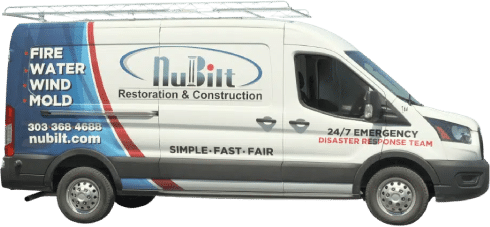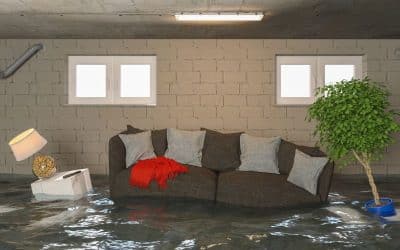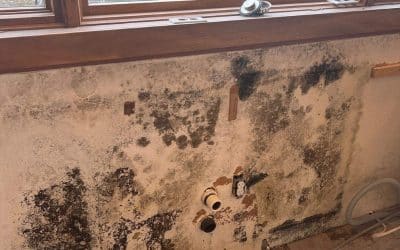Emergency water damage response is critical because delays can make restoration more complex. The longer water sits, the more difficult it becomes to fully extract moisture and prevent secondary issues like wood rot, drywall deterioration, and air quality concerns. Quick intervention can mean the difference between a straightforward drying process and extensive reconstruction.
The Dangers of Delayed Action
When water damage occurs, many property owners underestimate the speed at which it spreads. Water follows the path of least resistance, travelling through cracks, flooring, and porous materials. Even areas that appear dry may still contain hidden moisture, leading to long-term structural damage. Electrical components and HVAC systems can also be affected, increasing safety risks if not addressed immediately.
Beyond structural concerns, standing water creates an ideal breeding ground for mold. In as little as 24 to 48 hours, mold spores begin to colonize, releasing allergens and potential toxins into the air. Once mold takes hold, remediation becomes significantly more complex and expensive. Acting swiftly not only minimizes damage but also helps avoid major health risks.
Common Challenges in Water Damage Restoration
One of property owners’ biggest challenges during a water damage emergency is knowing what steps to take. Many people attempt to handle the situation themselves, using household fans or opening windows in an attempt to dry out affected areas. Unfortunately, these methods rarely reach moisture trapped beneath flooring, inside walls, or within insulation.
Another major challenge is navigating the insurance claims process. Many property owners are unsure what their policy covers, how to document damages, or how to work with insurance adjusters. This confusion can result in delays in completing the necessary repairs, leading to greater long-term damage.
Additionally, choosing the right restoration team is crucial. Not all companies provide full-service restoration, leaving property owners to deal with issues like hidden moisture, inadequate drying, or incomplete structural repairs. Selecting experienced professionals ensures that every aspect of the damage is addressed, from emergency water extraction to the final stages of reconstruction.
The Restoration Process: What Happens After a Water Damage Emergency
When a professional water damage restoration team arrives on-site, the first priority is assessing the full extent of the damage. This involves using moisture meters, thermal imaging, and other advanced tools to detect water that may not be visible to the naked eye. Immediate water extraction begins to remove standing water, followed by industrial-strength drying equipment to eliminate excess moisture.
Proper dehumidification is a critical step, as it prevents lingering moisture from leading to mold growth. Walls, flooring, and structural components are carefully monitored to ensure they are completely dry before any repairs begin. If mold has already begun to develop, certified remediation techniques are used to safely remove contamination and prevent future growth.
In cases where water damage has caused significant structural deterioration, repairs and reconstruction may be necessary. This can include replacing drywall, refinishing floors, and restoring electrical and plumbing systems. The goal is to return the property to its pre-loss condition as efficiently as possible.
Preventing Future Water Damage
While emergency response is essential, taking proactive measures to prevent water damage can save homeowners and business owners from future disasters. Regular maintenance of plumbing systems, roof inspections, and proper drainage management can significantly reduce the risk of water-related issues. Ensuring that sump pumps and water heaters are in good working condition can also prevent unexpected failures that lead to flooding.
Installing water detection systems can provide an early warning when leaks occur, allowing for faster intervention. In commercial properties, implementing a water damage emergency plan ensures that employees or building managers know how to respond quickly in the event of a leak or flood.
The Importance of Professional Expertise in Water Damage Restoration
Choosing the right restoration professionals makes all the difference when faced with water damage. Proper training, experience, and specialized equipment ensure that every step of the process is handled correctly. Restoration experts are trained to identify not just visible damage but also hidden risks that could lead to further issues down the road.
The most effective restoration teams provide comprehensive solutions, from the initial emergency response to the final reconstruction phase. Working with professionals who understand the full scope of water damage allows property owners to have peace of mind, knowing that their home or business is being restored safely and effectively.
Water damage can happen at any time, and the speed of response is crucial in minimizing destruction. Immediate action prevents further complications, including structural deterioration and mold growth. Understanding the risks, common challenges, and necessary steps for restoration helps property owners make informed decisions when faced with an emergency.
While prevention is always the best defense, having a trusted emergency response plan ensures that the right steps are taken immediately when disaster strikes. By prioritizing fast action and professional restoration, property owners can protect their investments and restore their spaces to full functionality as quickly as possible.
Contact Nubilt to learn more about water damage and your home today.






